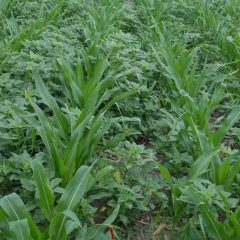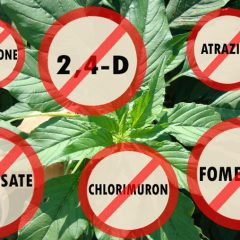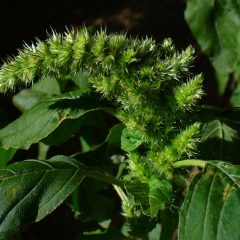Hygeia Note — The below email was sent to a group of individuals on June 1, 2020 by Lou Nelms, and is posted here with his permission. Words in [brackets] were added by Hygeia for clarity. Nelms has monitored the impact of dicamba and 2,4-D use, drift, and volatilization in Illinois since the beginning of […]
Read More, References, Comment »
DTN Progressive Farmer reports that dicamba-resistant weeds appear to have started to crop up in the Midwest and Midsouth regions. These soy and cotton growing regions have seen a huge increase in dicamba use over the last couple of years since dicamba-resistant varieties of these crops were introduced. An estimated 60 million acres of dicamba […]
Read More, References, Comment »
In a carefully orchestrated exchange during an April 9, 2019 House Appropriations Committee hearing, the U.S. Secretary of Agriculture Sonny Purdue asserted that Europe is an “[ag] technology-free zone” and will pay a big price as agricultural productivity suffers. What prompted this striking assertion? Coverage of the Secretary’s comments in EURACTIV.com identifies what prompted the […]
Read More, References, Comment »
Three new Xtend-dicamba related items have been posted recently on Hygeia. Collectively they frame what is to come as farmers and herbicide applicators begin the 2019 herbicide spray season. In a fact-filled piece in DTN, Emily Unglesbee traces the march of glyphosate-resistant Palmer amaranth across the southeast, and then to the north and west. This […]
Read More, References, Comment »
DTN staff reporter Emily Unglesbee has ably covered the dicamba-drift crisis over the past couple of years. Her latest is a detailed, three-part series on Palmer amaranth, “possibly the most aggressive weed American farmers have ever faced” (Unglesbee, 2019a). Palmer amaranth is so scary because of its “spectacular reproductive abilities” and it’s extreme adaptability. This […]
Read More, References, Comment »
Note to Readers: Steve Smith, Chairman and founder of the Save Our Crops Coalition and R+D Director of Red Gold (a major midwest tomato processor), has been actively engaged in the evolution and approval of dicamba-resistant crops. He has raised concern — and more recently alarm — over the damage done to non-target crops, trees, […]
Read More, References, Comment »
In an experiment conducted in Missouri, researchers have identified Palmer amaranth that is resistant to six herbicides. Amaranthus palmerii is a one tough weed. When full grown, at its base, stalks can match the circumference of a man’s wrist. One plant can set over 400,000 seeds. It has a long history of herbicide resistance, and […]
Read More, References, Comment »
Herbicide-resistant weeds are a common topic around here, so we were interested in this new science out of Argentina identifying a new “superweed” resistant to glyphosate, dicamba, and 2,4-D. Plus, the researchers learned more about the mechanism of herbicide resistance in one of the most common weed families – the Amaranths (Amaranthus species). Farmers throughout the croplands of the […]
Read More, References, Comment »
Answer — What to do about dicamba? Larry Steckel is a widely respected extension weed scientist who has worked for 30+ years for the University of Tennessee. He welcomed and enjoyed the wondrous years, 1996 through about 2004, when one or two applications of Roundup worked flawlessly on almost all corn, soybean, and cotton farms. […]
Read More, References, Comment »
Dicamba drift is in the news again, this time with a detailed story in Reuters about a strong, unusual statement by two large seed companies that urges the EPA to end post-emergent use of dicamba. Tom Polansek’s piece details the latest in damage estimates – over 1 million acres of soybeans alone have reportedly been injured by […]
Read More, References, Comment »










